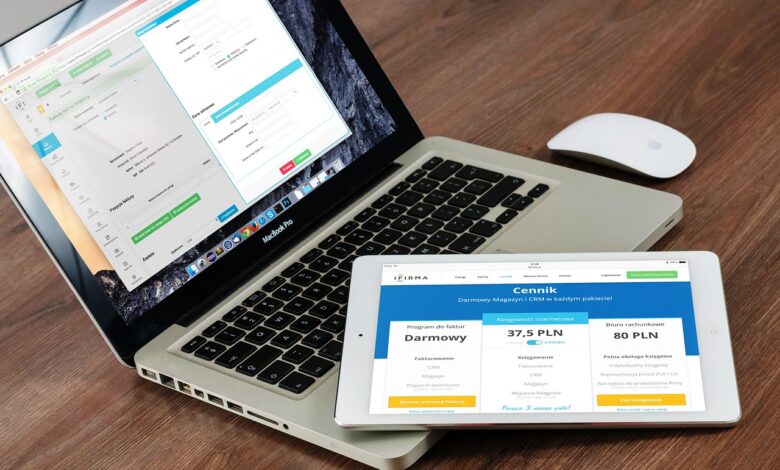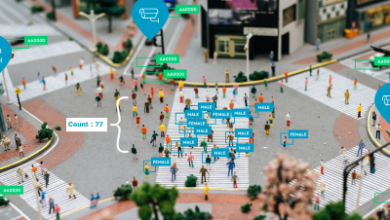How to create header and footer with Elementor

A website is incomplete without a header and footer, which is crucial for design and user experience. They consolidate vital links, serving as a navigation map and facilitating easy contact with the business owner. As a marketer, understanding the significance of a custom header and footer for your WordPress site is essential. We’ll explore two options on WordPress – manual creation and plugin use, each with pros and cons. Now, let’s talk more on how to create custom header and footer using elementor page builder
Creating Custom Header and Footer with Elementor: A Quick Guide
To start create a personalized header and footer using Elementor, follow these steps:
1. Install and Activate Elementor:
- Head to the WordPress admin panel > Plugins > Add New.
- Install and activate the free Elementor plugin.
2. Create Blank Header and Footer Template:
- In your WordPress side panel, go to Templates > ADD NEW TEMPLATE.
- Select the desired header or footer template, or opt for a blank template to customize from scratch.
3. Define General Header/Footer Layout:
- Customize the layout by clicking the main customization button in the Elementor editor.
- Access the Layout section to select the appropriate structure blocks for your design.
- Choose whether to stretch or keep the layout fixed from the Stretch Section under the Layout panel.
4. Add Components to Your Header/Footer:
- Enhance your header/footer by adding various elements in the Elementor editor.
- Include elements like a logo for brand identity, a Nav Menu block for easy navigation, a Search field for accessibility, and social media buttons for the footer.
5. Publish Your Design:
- Click the main Publish button to make your new header and footer live.
- A pop-up will appear, allowing you to choose where to publish the header/footer—whether on the entire site or with specific conditions for particular pages or posts.
Now, you’ve successfully created a custom header and footer using Elementor. Enjoy your uniquely designed website!
10 benefits of creating a header and footer with the Elementor page builder
Creating a header and footer with the Elementor page builder offers several benefits that contribute to a better website design and enhanced user experience:
Customization Flexibility:
Elementor provides extensive customization options, allowing you to design headers and footers that align perfectly with your brand identity. You can choose layouts, colors, fonts, and other elements to match your website’s aesthetics.
User-Friendly Interface:
Elementor’s intuitive drag-and-drop interface makes it easy for users of all skill levels to create headers and footers. No coding knowledge is required, making it accessible for beginners while offering advanced options for seasoned designers.
Responsive Design:
Elementor ensures that your headers and footers look great on all devices. The platform lets you preview and adjust the design for various screen sizes, ensuring a consistent and appealing layout for desktop and mobile users.
Pre-designed Templates:
Elementor comes with a library of pre-designed header and footer templates. This feature can save you time and effort, providing a starting point for your design that you can customize to fit your needs.
Consistency Across Pages:
With Elementor, you can create a standardized header and footer design that remains consistent across all pages of your website. This consistency enhances the overall user experience and helps in establishing a cohesive brand identity.
Integration with WordPress Features:
Elementor seamlessly integrates with various WordPress features and functionalities. You can incorporate dynamic elements, such as dynamic content, custom fields, or post information, into your headers and footers to create a more engaging user experience.
Optimized for SEO:
Well-designed headers and footers contribute to a well-structured website, which is beneficial for search engine optimization (SEO). Elementor allows you to implement SEO best practices by customizing elements like headings, navigation and calls to action.
Time Efficiency:
The drag-and-drop functionality and ready-to-use templates in Elementor significantly reduce the time required to create headers and footers. This efficiency is especially valuable for website owners and designers with tight schedules.
Advanced Design Capabilities:
For those with design skills, Elementor offers advanced design capabilities. You can use custom CSS, animations, and other advanced features to create visually stunning and dynamic headers and footers.
Regular Updates and Support:
Elementor is actively maintained, with regular updates and a strong support community. This ensures that your header and footer designs remain compatible with the latest WordPress versions and benefit from ongoing improvements and new features.
Creating Header and Footer Codes: A Step-by-Step Manual Process
When manually crafting header and footer codes for your website, proceeding with caution is crucial to avoid unintended consequences. Follow these steps for a seamless manual method, ensuring the integrity of your site:
1. Create a Child Theme:
- Begin by establishing a child theme to serve as a safe playground for your modifications. This prevents any interference with the parent theme and safeguards your existing website settings.
- Create a child theme folder within your theme directory at wp-content/themes.
- Generate a stylesheet folder named style.css, housing all CSS rules and declarations for your theme.
- Enqueue both the parent and child theme stylesheets to establish the necessary connection.
- Install the child theme as you would any regular theme via the Administration Screen > Appearance > Themes.
2. Activate the Child Theme:
- Navigate to Administration Screen > Appearance > Themes and activate your newly created child theme.
3. Edit functions.php:
- With the child theme active, proceed to edit its functions.php file. Before diving in, take the precaution of backing up your site.
4. Edit via FTP (File Transfer Protocol):
- For advanced users comfortable with FTP, edit the functions.php file using an FTP client like FileZilla.
- Add custom header and footer codes at the end of the file.
5. Edit via WordPress Dashboard:
- Alternatively, navigate to Appearance > Theme Editor within your WordPress dashboard.
- A warning message will appear, indicating that you are about to edit theme files. Acknowledge and proceed.
- Select the appropriate file and insert your custom header and footer codes at the end.
Update the changes to apply your modifications.
You have successfully created and implemented custom header and footer codes for your website by following these manual steps. For those seeking a more user-friendly approach, plugins like Child Theme Configurator can simplify the child theme creation process. Whichever method you choose, exercising caution and regularly backing up your site are essential practices.
Conclusion
The significance of custom headers and footers in web design cannot be overstated. Whether you opt for the manual method, dive into the intricacies of theme files, or leverage user-friendly plugins for a smoother journey, the result remains the same—an enhanced website that reflects your unique brand identity.
Creating a child theme as a secure testing ground safeguards your existing settings while delving into customization. This manual process, though meticulous, grants you the freedom to tailor your headers and footers precisely to your vision. The precautionary measures of backing up your site and understanding theme file edits ensure a seamless experience.
Remember, every modification you make contributes to the overall user experience, creating a cohesive and visually appealing digital space. Whether you’re an adept coder utilizing FTP or a WordPress enthusiast navigating the dashboard, the ability to infuse your website with custom elements is a powerful tool.
In conclusion, the journey to crafting custom headers and footers is a creative endeavor that beautifies your site and enhances its functionality. As you take these steps, revel in the creative process, experiment with designs, and enjoy the transformation of your digital presence. Your website is not just a collection of pages; it’s an ever-evolving canvas, and custom headers and footers are your brushstrokes to leave a lasting impression on your visitors.






